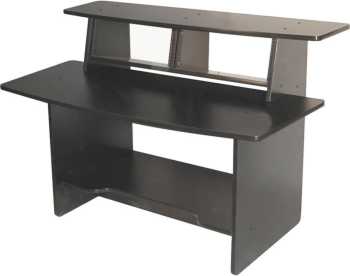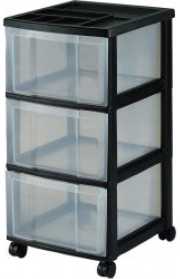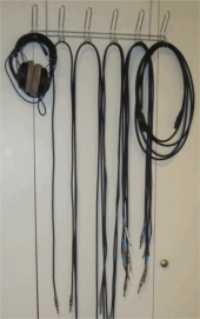
Home Recording
Studio Setup
Choosing a Location
We start by choosing a location to begin your home recording studio setup.
The location is so important because this will be your sanctuary, your place to relax and get away from the chaos of your everyday life.
This should be a place where you can be reasonably isolated.
I would recommend using a spare bedroom or office as a dedicated space.
Try to setup your studio in a separate part of your home if possible, rather than double booking a current room
(such as your bedroom or living room).
This way you can focus on your music free from distractions.
A basement area would be ideal since you will be able to eliminate some of the ambient noises of the neighborhood around you.

Most importantly, choose a location where you feel comfortable and can let your creativity freely flow.
Please note that I'm not going to discuss acoustic treatments, studio foam, bass traps, etc.
In general I believe it's a waste of money, but especially for the beginner it's an unnecessary distraction.
Down the road you may want to consider it, but early on you won't be able to tell the difference anyway so it just causes confusion and anxiety at this point.
The goal is really to be able to sound good no matter what room or space you choose, so unless you're recording in a fun house hall of mirrors or inside a submarine you should be fine.
Get Furnished
Having a smart layout makes all the difference in the world.
Home recording studio setups can come in all shapes and sizes, but even the most spacious, private, isolated space can be wasted without some forethought.
All of your gear should be organized and laid out so you can enter the room and get right to work.
Nothing will scare off a great idea faster than searching for cables, mics, pedals, tuners, instruments, straps, manuals, etc.
Musical inspiration is delicate like a house of cards... one false move and it all falls down.
It can also be like playing Jenga while drinking.
The analogy depends on if you like making card houses or drinking.
In any event...
Have your gear organized and close to you.

Get some easy to reach plastic storage containers with drawers to keep all your loose accessories and spares together in one place.
You can get these at any number of places but Target and IKEA are a good place to start.
Buy enough furniture so that everything has its own dedicated space and isn't piggybacked on another piece of gear... even something you don't use.
If at any point you find that you are not using something regularly...
Get Rid Of It From Your Setup!
Don't throw it out on the street, but store it away so that it's not a constant distraction.
The other option is to sell it, the great news about this hobby is that the gear required has high re-sell value.
Remember you can always find good, lightly used equipment on ebay, craigslist, garage sales, etc.
Finally, as you continue on though this walk-through you'll see some gear (such as Audio Interfaces or Headphone Amps) that has the capability to be rack mounted.
The upside of this is that you have all your controls in one place in an easy to reach location, as opposed to wherever you can find the spare space.
If you do end up with gear that can be rack mounted then this is a no-brainer...
Simplify your studio setup and simplify your life.
Basic Studio Builder Rating - $$
This is a good place to spend some scratch... a bad layout will crush your creativity and your desire to spend time in your studio.
A place for everything and everything in its place.
Quick Picks - Storage Solution
IRIS 4-Drawer Cart with Organizer Top and CastersDon't Forget The Accessories
Everyone I know has some kind of "misc drawer" that accumulates the most fantastic collection of bizarre junk.
How's that working out for you?
Impossible to find anything when you need it, right??
Don't do this to yourself.
Give yourself a fighting chance at getting your home recording studio setup the right way.
Use labels or tape to identify each drawer and do not double book drawers with things that are too different.
1 Drawer sharing picks and spare strings - OK
1 Drawer sharing tuners and tuna fish - Not OK
Get more containers if you have to, remember we are trying to get things organized not simply redistribute the mess.
Also, get stands for your monitors, get stands for your mics, get stands for your guitars and keyboards, and surge protectors with plenty of inputs.

Surge protectors with on/off switches are great for controlling a number of pieces of gear that may have power switches in strange hard-to-reach places or gear with no power switch at all.
A label maker is a small investment that will pay for itself in keeping you sane when you're looking for that random adapter, or half torn manual that "you know is here somewhere".
Last but not least for your home recording studio setup, a simple over-the-door coat hook can make a great place to store your studio cables.
They are out of your way and separated for easy access instead of piled into a drawer or bag only to remain permanently tangled.
Quick Picks - Organizational Gear
Brother P-touch Home and Office Labeler (PT-D200)InterDesign Classico Over-the-Door Rack









